Image diagnoses for "Plaque (raised surface > 1cm)", "Face", "red"
88 results with 218 images
Results forPlaque (raised surface > 1cm)Facered

Borrelia lymphocytoma L98.8
Lymphadenosis cutis benigna: painless, non-itching, calotte-shaped, firm red lump that has been present for 3 months, no scaling.

Seborrheic dermatitis of adults L21.9
Dermatitis, seborrhoeic: Flat, symmetrical (butterfly-like - DD: rosacea, systemic lupus ertyhematosus), blurred, location-constant and therapy-resistant, coarsely scaly red plaques.
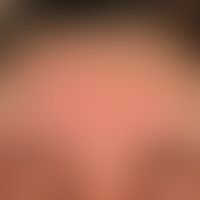
Psoriasis seborrhoic type L40.8
Psoriasis seborrhoeic type: for several months constant and therapy-resistant, only slightly elevated, homogeneously filled, symmetrical, red-yellow, slightly accentuated plaques, no type I allergies detectable.

Chronic actinic dermatitis (overview) L57.1
Dermatitis chronic actinic: Chronic laminar eczema reaction which is essentially limited to the exposed skin areas Typical of chronic actinic dermatitis and thus distinguishable from a toxic light reaction (type acute solar dermatitis) is the blurred transition (eczematous scattering reactions) from lesional to healthy skin.
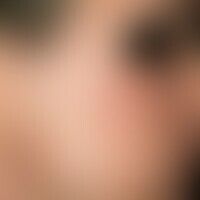
Acne (overview) L70.0
Acne vulgaris (overview): severe clinical picture with inflammatory papules, papulo-pustules and pustules in a 17-year-old patient; increasing course of the disease since 2 years. extensive scarring beginning in the central cheek area. picture of acne vulgaris (type: acne papulo-pustulosa, grade IV). classic indication for systemic isotretinoin therapy!

Leprosy reaction A30.8
Leprosy reaction type I: Cell-mediated inflammatory (flare-up) reaction in existing leprosy foci, here lepromatous leprosy.

Infant haemangioma (overview) D18.01
Haemangioma of the infant (series: 3-month-old infant); initial findings of a large hemangioma with little elevation.
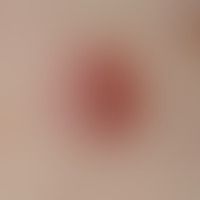
Basal cell carcinoma (overview) C44.-
Basal cell carcinoma (overview): Nodular basal cell carcinoma with a shiny, smooth surface interspersed with bizarre telangiectases.
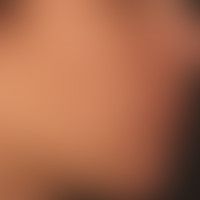
Acne (overview) L70.0
Acne papulopustulosa: disseminated follicular papules, pustules and retracted scars; recurrent course.

Contagious impetigo L01.0
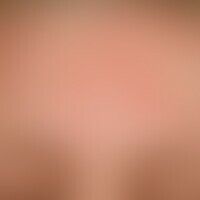
Lupus erythematosus subacute-cutaneous L93.1
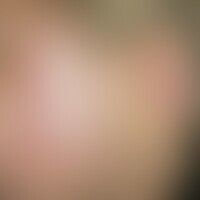
Psoriasis vulgaris L40.00
psoriasis vulgaris. plaque psoriasis. solitary, chronically inpatient, intermittent, sharply delineated, reddish, silvery scaly plaques localized in the face in a 6-year-old girl. erythrosquamous plaques also appear on the extensor sides of the arms and legs. symmetrical infestation. positive family history.

Lupus erythematodes chronicus discoides L93.0
Lupus erythematodes chronicus discoides: persistent, progressive skin changes in a 67-year-old patient for 15 years; large, hyperesthetic, red, centrally ulcerated plaque.




